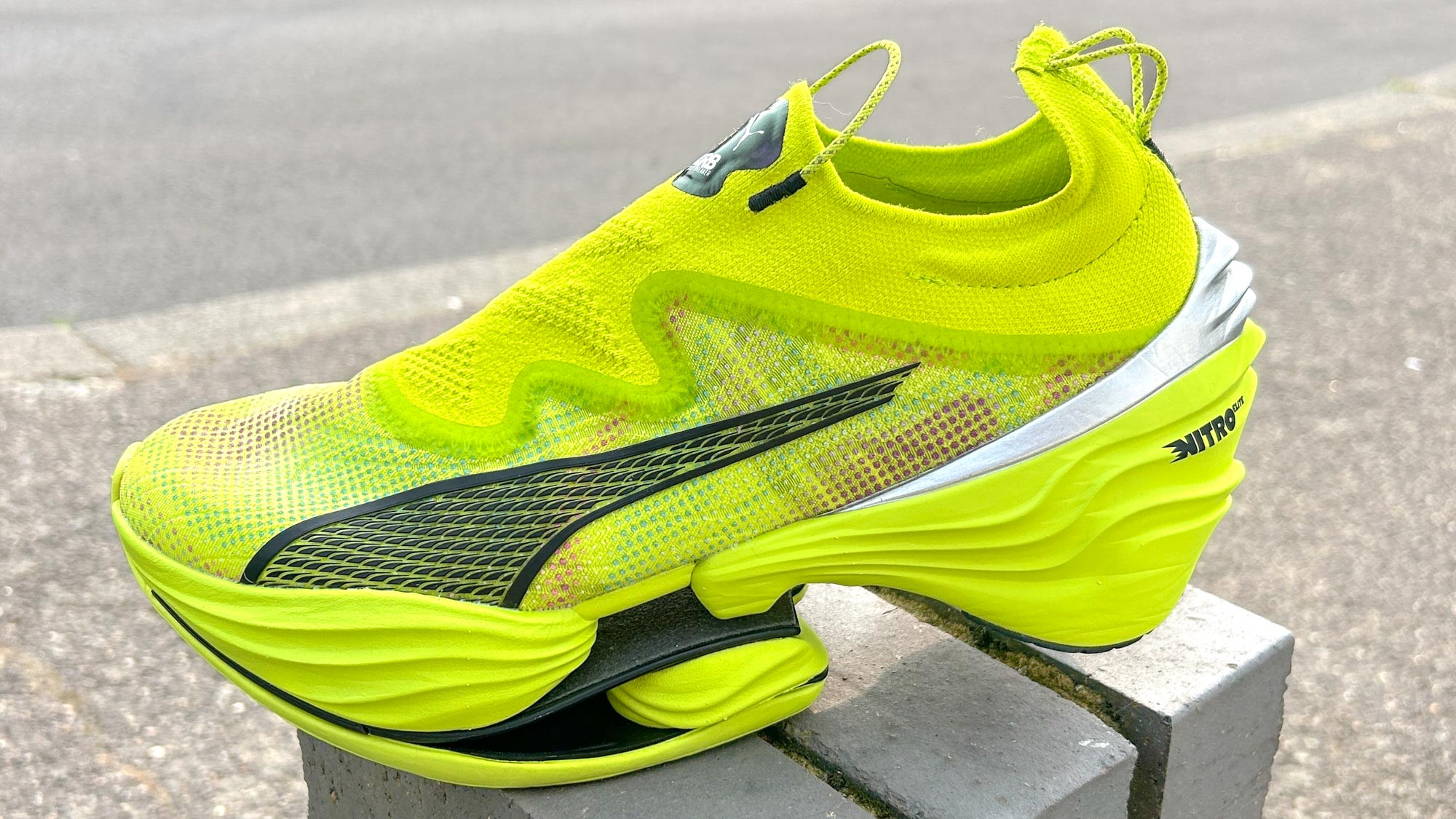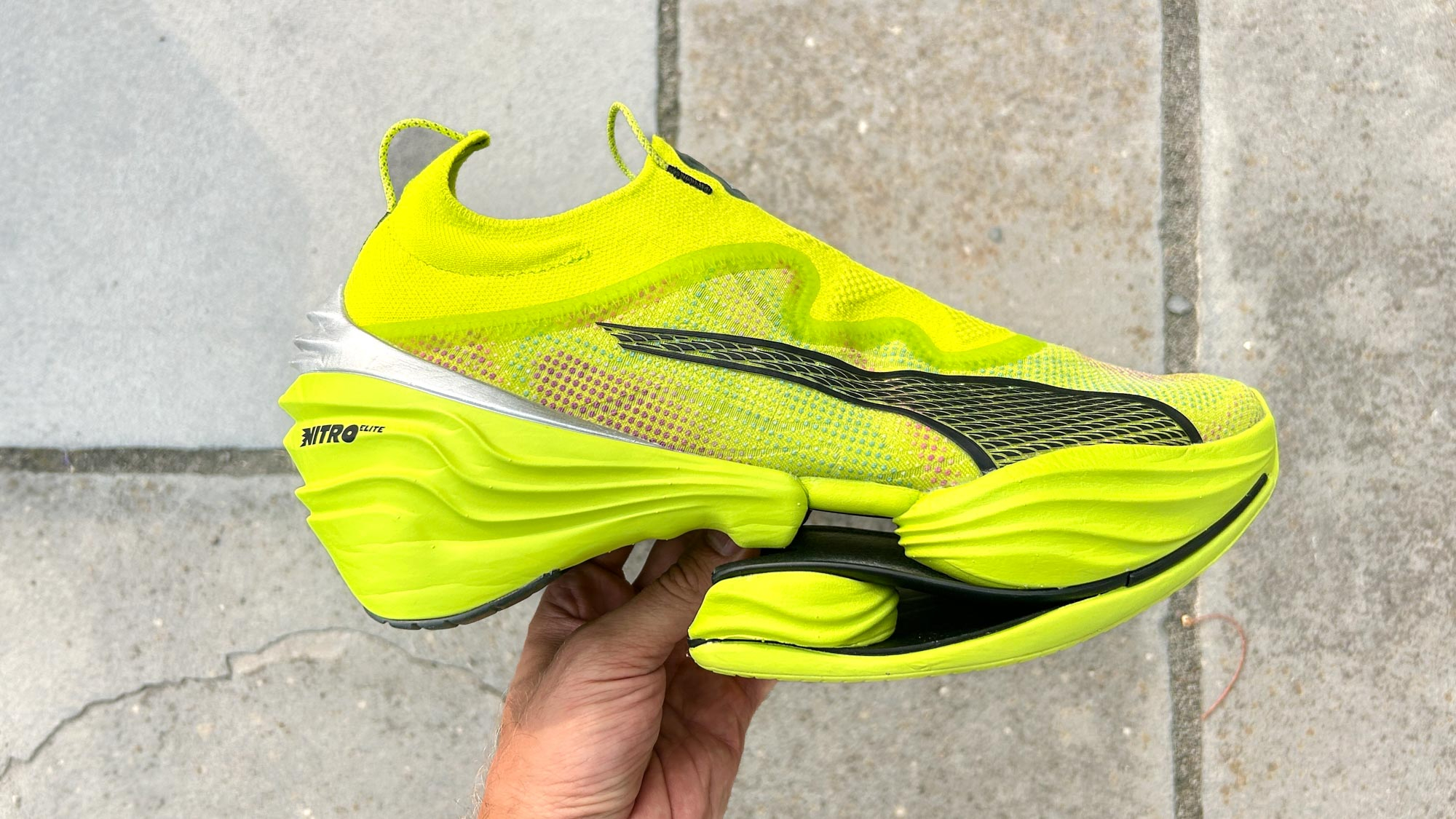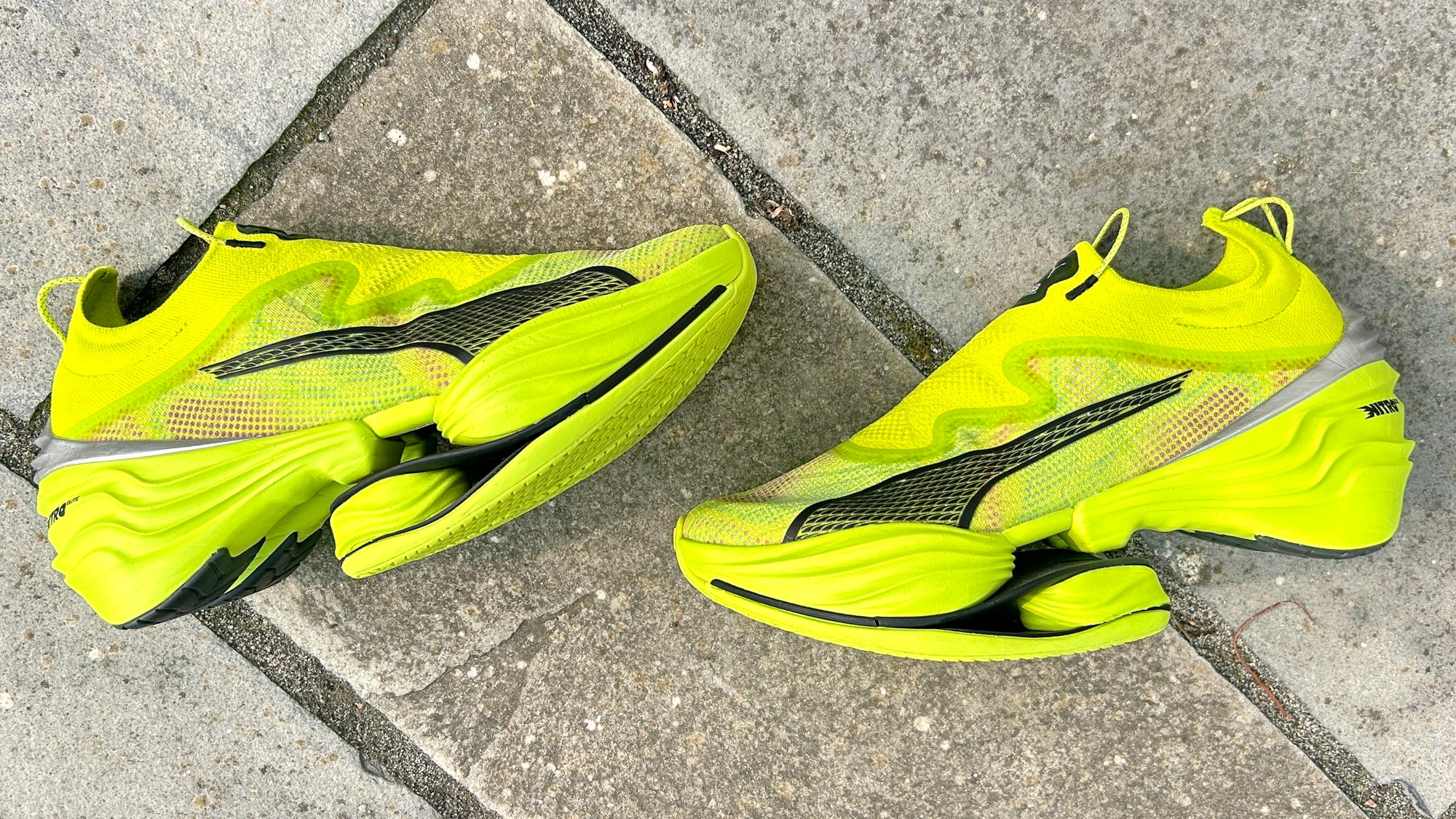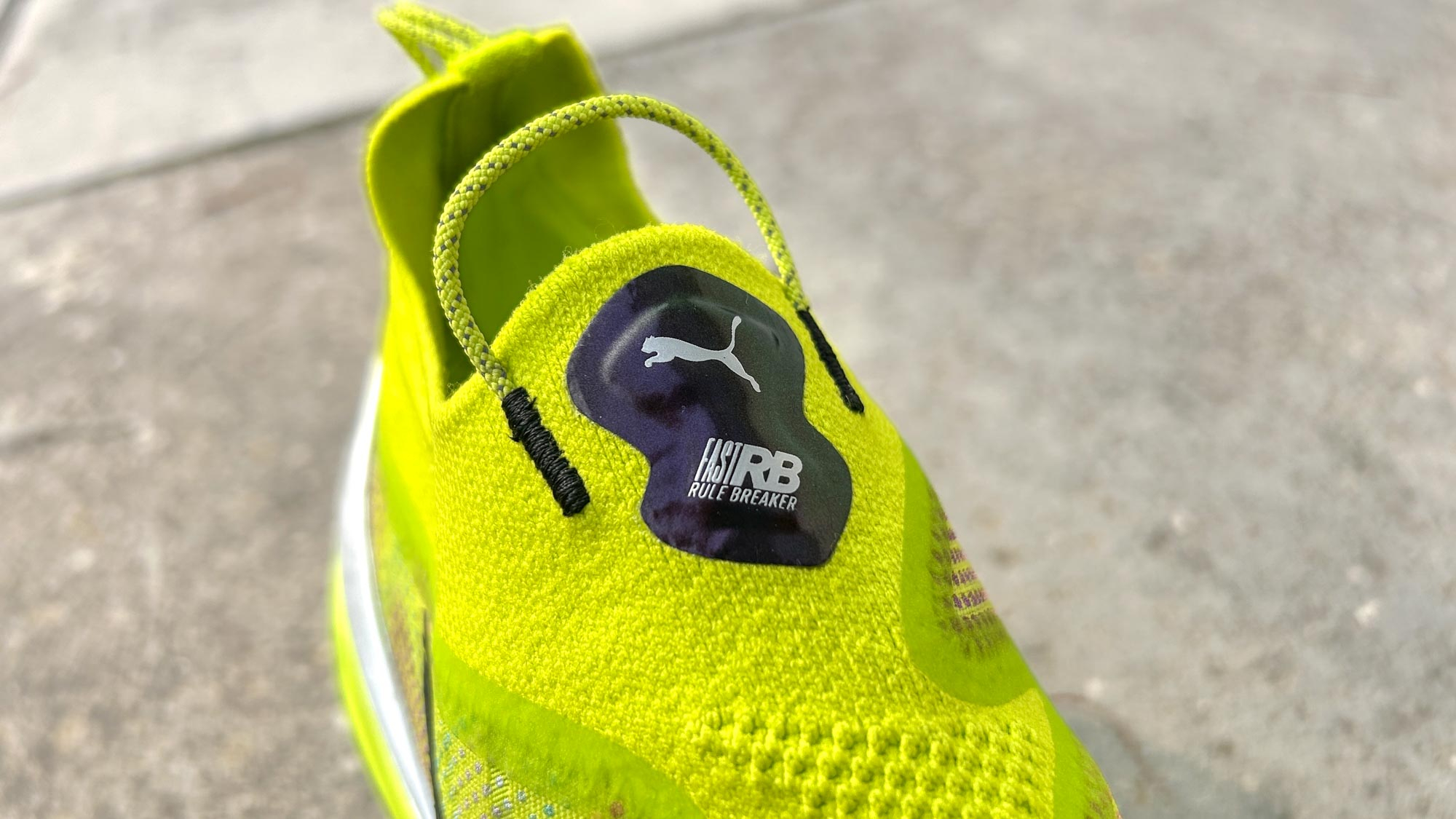
Puma has been behind some of the most innovative carbon plate running shoes released in recent years, but it’s fair to say the new Puma Fast-RB Nitro Elite goes further in pushing boundaries than anything the brand has done so far.
The RB in the name stands for Rule Breaker, and that’s central to the concept behind the shoe, with Puma aiming to create the bounciest shoe possible outside the constraints set by World Athletics, which include a limit of one plate in the midsole and a maximum stack height of 40mm at the heel.
There are three plates in the midsole of the Puma Fast-RB, with a full-length carbon plate at the top of the midsole, then two more TPU plastic plates under the forefoot. These plates are divided by chunks of Puma’s bouncy Nitro Elite foam, also used in legal racing shoes like the Puma Deviate Nitro Elite 3 and Puma Fast-R 2.
The stack height is an incredible 58mm at the heel, and it’s 46mm at the forefoot as well. The midsole is also decoupled, so the heel and forefoot sections aren’t joined together by foam, just the plate, and when placed on a flat surface the heel doesn’t even touch the ground.
Add in the laceless upper and it's certainly one of the strangest running shoes I’ve ever seen.
Puma Fast-RB Nitro Elite: price and availability

The Puma Fast-RB goes on sale on August 28 and it’s going to be a very exclusive shoe in terms of both price and availability. Only 1,000 pairs will be made available to buy at first, and the price is €350 — the US price isn’t confirmed yet, but it’s expected to be around $400.
It's expensive, exclusive, and somewhat bizarre, but what is the Puma Fast-RB like to actually run in? I took it out for a nine-mile run at a range of paces to find out; here my key takeaways.
It’s incredibly bouncy
Puma went all out to create a bouncy ride with the Fast-RB, and the shoe undoubtedly delivers. I felt a huge spring in my step when running at easy or fast paces in the shoe, but the propulsion from the midsole and plates was more noticeable when I did increase my speed.
Most carbon plate running shoes feel unnaturally springy to run in compared with regular trainers, but the Puma Fast-RB takes things up another level, and it’s a lot of fun to run in as a result.
I ran faster than I expected

For most of my run I took things fairly easy in the Puma Fast-RB, partly because I was a little worried about the instability of its design, and my heart rate was quite low throughout. For my effort and heart rate, my pace was higher than usual, indicating the plates and springy design of the Fast-RB were having a beneficial effect.
That said, when I made more of an effort to push the pace in the shoe, it did feel a bit labored after a while for me, because it’s a fairly heavy shoe and simply very large. It almost feels like it’s best used for cruising through daily runs and having fun, rather than actually racing.
It’s not a stable shoe
Even legal carbon plate running shoes are rarely stable, so given the Fast-RB’s wild design it should come as no surprise to learn it’s pretty wobbly underfoot. I chose a mostly flat route on even surfaces with few turns for my first run in the shoe, and I wouldn’t feel that comfortable using it on a twisting course with cracked pavements.
It’s much heavier than most racing shoes
I mentioned the weight already but it’s worth highlighting again because at 13oz in my US size 10, the Puma Fast-RB is more than 3.5oz than pretty much any other carbon shoe I’ve tested — the Puma Deviate Nitro Elite 3 is 7.5oz, for example.
This weight means that while the Puma Fast-RB is certainly a rule breaker, I’m not sure anyone will be using it to break any records — I’d rather be in a lighter, legal racer to chase PRs myself, and have preferred running at a more relaxed pace in the Puma Fast-RB so far.
The upper is comfortable and secure

Laceless uppers always present a bit of a risk because it’s sometimes harder to get a secure lockdown fit with them. I worried about this with the Fast-RB in particular because I didn’t want my foot to move around at all given the unstable design underfoot.
But the upper proved tight enough and comfortable when I ran in the shoe. It fit me well in my normal size, but I’d say if you’re often on the fence between two sizes, it might be better to go for the smaller one with the shoe to ensure a tight enough fit.







